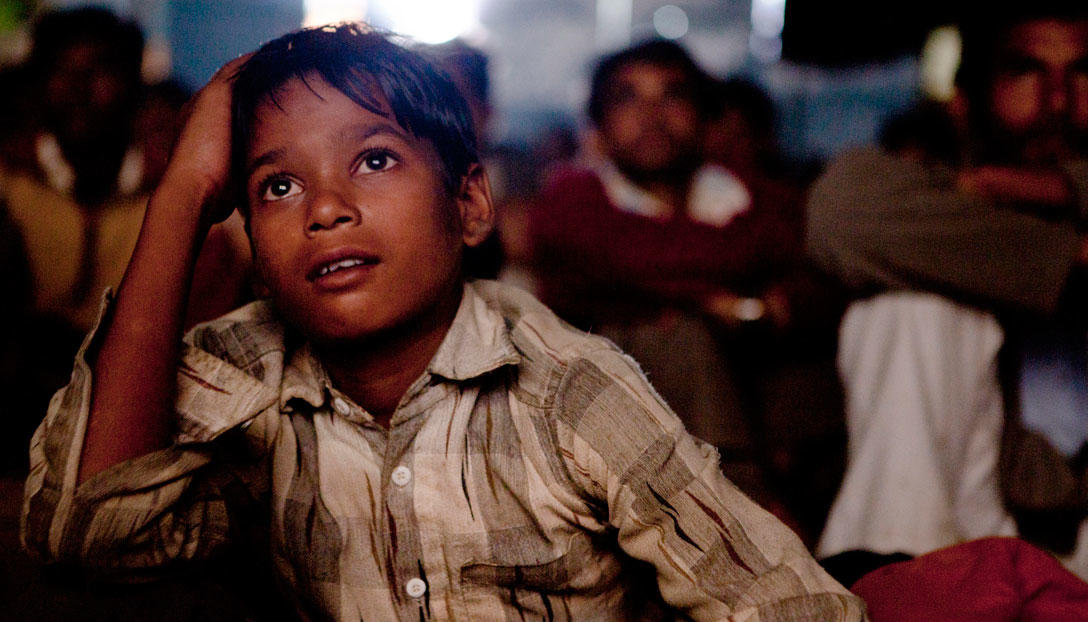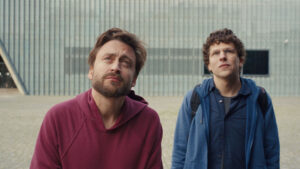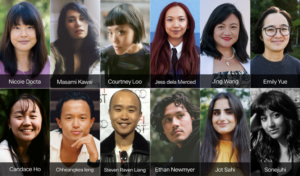Amit Madheshiya
Directors Shirley Abraham and Amit Madheshiya attended the 2014 Documentary Edit and Story Lab with their film “The Cinema Travellers,” about the last traveling cinemas in the faraway villages of India. Below, Amit chronicles their time at the lab and the journey to arriving at the final cut of their film.
“We are here to experiment. We are here to fail,” declares Tabitha Jackson, director of the Documentary Film Program at Sundance Institute, sitting in a circle with filmmakers and advisors invited for the Doc Edit and Story Lab. In the rarefied air of the Utah mountains, Tabitha’s declaration comes as an invitation to a utopia.
As the sun inflames the Aspen trees around us, Tabitha inspires us by recounting how stories have shaped the human civilization. She wants to create a nurturing space for artists where the path you tread is as important as where it leads. Where failure is embraced as a stepping stone to the creative process, and daringly, even as a possible outcome.
Shepherding us toward this utopia, she asks now, “Why do you do, what you do?” The question leads to a palpable churning of emotions in the circle. “I like to ask questions about things that bother me,” says one filmmaker. “It is the superhero complex. Filmmaking makes me believe I can do everything,” adds another.
Listening to my fellow filmmakers speak about their deepest motivations, desires, dreams, and fears is finding camaraderie. The circle is knitting closer and I can feel its warm embrace. Circles do make us one and it is now that I understand Milan Kundera’s deep nostalgia for the magical circle—which he was once a part of. The loss of camaraderie and poetry that he laments profoundly, while writing in exile.
The next day, sitting in the same circle, I am petrified. My co-director Shirley Abraham and I have just screened an assembly of our film The Cinema Travellers. This assembly of raw footage is our maiden attempt at editing, while we are looking for an editor to come on board. “Your film has a problem of riches,” says Jonathan Oppenheim, the legendary editor, who is an advisor at the Lab. “It is a lovely problem to have, but it is as real as the problem of scarcity. It needs to be wrestled with,” he adds impishly, revealing how much he enjoys wrestling such beasts to the ground.
Our beast is still a shapeless one and speaks no cohesive language. But to our surprise, it receives a warm and enthusiastic welcome into the circle. It is humbling to witness the respect and love extended to one’s raw material and to be applauded for the promise of a story that it carries within. The circle soon warms up with a mélange of ideas, astute observations, precise critique, and enticing trails of what-ifs. It comes with a cerebral and logical force that could sweep you away in varied directions, all meaningful and frightfully exciting.
At times, even tempting you with a quick and easy liberation from all your struggles. In times like these, we are blessed to find our anchor in the wisdom of Kristin Feeley, the director of the Documentary Film Program Labs. She tells us it’s alright to not take any of these paths now, however brilliant and tempting. She encourages us towards reflection and making our own path, yet again. For, a Sundance Lab often spurs the quick action of epiphanies, but also encourages deep contemplation.

Through the week, working closely with the stellar advisors, we have come to deeply value the guiding spirit of the Lab. “We are here to appreciate the generosity of man and nature,” Tabitha sums up the feeling, lovingly surveying the Wasatch Mountains around us. We feel blessed to be lodged in a secluded forest house with only a million cicadas and stars to keep us company.
In the dark of the night, we spot a shadow moving and wonder what creature could it be? To amuse us, it changes forms as it gallops through the thick forest. In the morning, we walk back to the familiar fold of the circle. Advisor Jesse Moss is up for reading over a hundred pages of transcripts from one of our protagonists—Prakash, an old projector mechanic, who is a loner and a philosopher. “I want to get inside his mind and try to understand him,” offers Jesse.
Advisor Jon Else has come to inhabit the spirit of our film. “This is a film about our tribe,” he says romantically. Jon is a quiet provocateur. Hacking away at the overgrowth and weeds of our rookie edit, he takes us deep down into the story and confronts us with the paths that have now opened up. Which path do we take; he leaves us with the difficult choice. Meanwhile, Jonathan is engaged in a deep study of the innards of our beast, pinned up in neat cards of yellow, pink, and blue, in our editing trailer.
He handles them with the precision of a surgeon, moving a card as if with a scalpel, to make a suggestion. Kristin checks in on the emotional toll of this intense creative jugglery and is the last person to retire after having seen our latest edit. After four years of lonely struggle on the film—that independent filmmaking often is—it is a relief to find companionship. To be with people who believe in you and care for your vision. Our stories belong to the circle now and we are only grateful to let go of their ownership.
“You should consider editing the film yourselves,” advises Kristin, as the Lab is drawing to a close. “Your instinct with the material feels just right,” Tabitha adds, her eyes gleaming. This is close to an emotional breakthrough for us. We are teary eyed, for we never had the conviction and courage to embark on this path. As the sun sets, Mary Lampson and Lewis Erskine walk into our editing trailer. We dim the lights as Lewis takes charge of the keyboard and Mary turns around the large display monitor, as if a blackboard.
Michael Goodier, our assistant editor at the Lab is wide-eyed, and so are we, but also nervous with excitement. Here are two legends of the editing universe, diving into our material, making a cut and then taking us through its contours and rhythm. Tonight we are not discussing the larger concerns of story, but rather the physicality of a cut—the mechanics of it. We learn what happens when you place one image after another.
How you build a thought through images and carry it on to construct a larger idea. It is a fundamental lesson and a most precious one if we are going to be the editors of our film. They have made visible to us the magic that moves cinema. When we step out into the forest, we believe we have the awareness of the tiny moment when the creature changes shape from one to another in the dark of the night.
Back in our edit room in Mumbai are mountains of raw footage to dig through. Leading us is Jonathan, whispering in our heads, “Raw footage has almost no right to exist on its own. Almost. You have to give it the right to exist.” There is a purpose to our existence now. The new pair of eyes, fresh from the Lab, delight us. There are newer discoveries in the material, but the process of sifting is painfully slow and exacting. We are chiselling away at a rock. It becomes meditative after a while. As the world recedes from our consciousness, leaving us in a cave, cold despair clings to us.
Editing this film is the most excruciating thing we ever committed ourselves to, and we often question our abilities. On occasion, we want to give it up. On other days, we want to abandon the film altogether. We don’t know what else to do, so we walk. We walk for hours, following the wild imagination of Werner Herzog that unfailingly lights our minds. He takes us to places far and wide and gives us inconceivable ways to look at the world. Herzog exhorts, from the dog-eared pages of a book, “What do you have to offer to the civilization?”

We feel small losing hope over our rookie struggles. Mercifully, we find refuge in the books of Walter Murch. Conversations with Walter Murch by Michael Ondaatje becomes our constant companion. More like a Bible to a believer through this time of struggle. Murch’s way of understanding and experiencing cinema fills us with infinite wonderment and guides us.
He writes, “We tend to accept this miracle (filmmaking) because we are right in the middle of it—it seems somehow normal—but I think in the future, a hundred years from now, people will look back at our period a bit the way we look at Gothic cathedrals.” The feeling resonates with our enchantment with the traveling cinemas, whose story we are telling in our film. We have marvelled at their bulbous tents that accommodate thousands. Their ancient elephant-like projectors and jute sacks bursting with 35mm reels.
They too appear like gothic cathedrals, preserving a time that is reminiscent of the beginnings of cinema, and are a deep source of wonderment in our digital era. Such discoveries stimulate our jaded minds, and then we have Jonathan, who encourages us, commiserating with our little struggles. “There are days of sorrow on every film. You have to wrestle with it. Sometimes it just won’t go down. Compliance is a moving target,” he says.
We are meeting Jonathan after a year, in the New York winter. It is a windy day, grey and treacherously cold. He is wearing a wool cap and a warm smile. We are honored and thrilled that Jonathan has joined us as our consulting editor, and today is a rare opportunity for us to meet him in person again. “Your intention is not blooming yet. Although, all the right elements are in the edit,” he says. Speaking in his characteristic soft voice, as if willing his words from a deep reservoir somewhere within, he says, “Intention is everything. Context is god.”
He is speaking in context of a scene in our film—a travelling cinema projectionist deliberates over cutting a piece of 35mm film. Having found the right spot, he cuts it with a pair of scissors and joins the two ends with transparent tape. He then drops the perforations through the film with an incense stick. For us, this is an important gesture in understanding the milieu and this cinema culture. A self-conscious look at our gothic cathedral—ruminating on the obsolescence of technology. Jonathan does not agree with the placement of the scene in the film.
He says, “This is one of the images in your film that feels like it belongs to another time, much like the images of Fellini. But it is important for you to find the right meaning for this scene.” He is quiet for a while and then adds, “New meaning is the key, the trick to this film. That is the thing you have to try and mine.”
“New meaning” is an eternal quest. Or so it appears to our humble brains. You begin your film with a certain intention. You strive for this intention to reflect in your filming. If you learnt something new while filming (hopefully you did), then the intention has to evolve, too. You carry this intention to the edit room. As you begin to assemble the film together, pulling it out from the dense fog of your brain, you will find your intention naked—in the stark light of logic and reason.
You feel embarrassed, depressed. But you have to find your film in this disparate material. Moreover, you want your film to foray into the world on its own and to engage a conversation. For that to happen, you have to breathe life into your material, give it a definite shape, body, and intellect. As this creature begins to breathe, acquiring a body and intellect of its own, it will reject things it does not agree with. Like the wrong blood type in one’s body. Or worse still, a vital organ: a heart that is not in sync with its new body. The ‘meaning’ that was calibrated with your ‘intention’ is no good any longer.
What do you do now?
You have to find “new meaning” in context of this newly assembled body until the creature becomes an organic whole. You have to question, re-evaluate every bit that now constitutes this body. It is a vicious cycle spiraling into the unknown. At this stage, “Everything you add or subtract will have an exponential effect on everything else,” Jonathan will be quick to remind you. When and how do you stop? “When the organism is self-sufficient. It will speak for itself,” he chuckles.
It has been another six months down this rabbit hole. Our beloved Jon Else is reading us glorious fictional reviews of The Cinema Travellers, goading us to finish the film! The quest for ‘new meaning’ has brought us to a place of exacting discipline, economy of thought, and singularity of vision. Owing to this, the creature is looking leaner and athletic. Jonathan, the dedicated surgeon, is making monthly rounds on Skype. Today, we are discussing the twentieth version of the rough cut. Jonathan exclaims, “You did it!” Laughing wholeheartedly, he says, “Your Frankenstein monster is talking now.”
The Cinema Travellers is the debut film of Amit Madheshiya and Shirley Abraham. The film premiered as an official selection at Cannes Film Festival 2016, winning the Special Jury Prize for L’Oeil d’or: Le Prix du documentaire. It has played 125 film festivals worldwide and won 19 awards, including the President’s Medal in India. Amit and Shirley’s work is supported by Sundance Institute, MacArthur Foundation, Bertha Foundation, Filmmaker Fund, Catapult Film Fund, New York Times, BBC, Goethe-Institut and India Foundation for the Arts.




